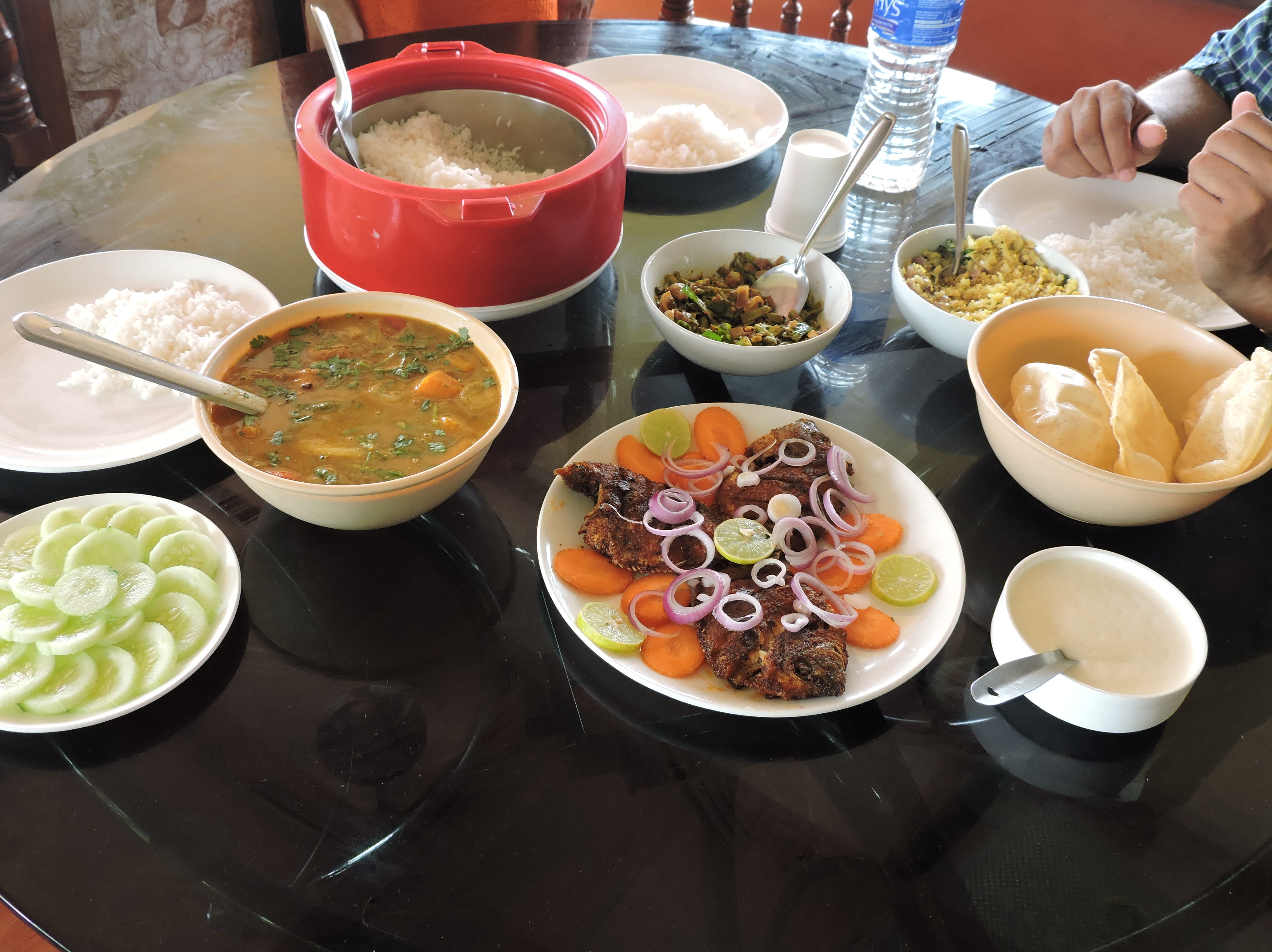Context plays a vital role in a food experience. A baguette wouldn’t taste as crisp and buttery on the busy streets of Kolkata, nor would the flavour explosion of a phuchka be as potent and appealing in a posh Michelin star restaurant in France. While a dish may be good on its own, it is the juxtaposition of the food and surroundings that heightens it to another level.
Perhaps the most universal example for this is the food we buy at the cinema. Do we really enjoy the extra-large tub of popcorn for its buttery richness? Probably not. It’s more likely that we buy it because it has become a ritual, almost an unwritten rule; because our minds have connected the big screen and tub of popcorn so closely with each other that we cannot separate the two anymore. Pavlov’s experiment does not apply to dogs alone.
When the food is delicious and the setting is idyllic, it’s a different matter altogether. I had such an experience in Kerala, way back in 2014. My parents and I had booked a houseboat for a day’s ride through the serene backwaters, adorned with coconut trees on the sides, with a few houses, the occasional church and a huge stretch of water, with cormorants everywhere, bobbing their heads up and down the surface. It was a breathtaking view.
Curious to know what was for lunch, I sneaked into the kitchen. The cook was frying the famous Pearl Spot Fish, known locally as Karimeen, coated in a spice paste. Although fried fish is a staple of Bengali cuisine, we tend to use pungent mustard oil, while Keralites usually use coconut oil. Moreover, karimeen is a saltwater fish which as a group tend to have an entirely different flavour compared to freshwater river fish like hilsa or bhetki. I was really eager to try it out.

Seated around a table with the view of the backwaters around us, we were served a pretty generous spread : a casserolle of plain steamed rice, a huge bowl of sambhar with all sorts of vegetables in rough, rustic chunks, the famous “thoran”, a medley of cabbage and freshly grated coconut with a tempering of mustard seeds and curry leaves, a dry curry with french beans and onions, and the centerpiece dish: 3 karimeen fries. To accompany all of this we had three huge pieces of “papadum”, a bowl of yoghurt, a simple salad comprising rings of onions slices of carrot and lime, adorning the three pieces of fish like jewels in a crown, and slices of fresh cucumber on the side.
The food was delicious. The hearty warmth and slight tamarind tang of the sambhar, the delicately flavoured thoran with the fresh coconut and curry leaves shining through, the spice of the bean curry, the crisp and flavourful fish, distinctly different from our own owing to its intense seafood flavour; the acidity of the yoghurt, the crunch of the papadum, the freshness of the cucumber to cleanse your palate: everything worked together absolutely brilliantly. It was the perfect example of how simple things can add up to something much more than the mere sum of its parts. Add the scenery, and you are in heaven. I’ve eaten at numerous restaurants since, and yet that meal on the houseboat, gently floating along the backwaters of God’s own country, is probably one of my absolute favourites till date.

To understand why it was so memorable, think of the scenery and the food as an inseparable unit. However authentically you may replicate the entire spread elsewhere, you will be missing out on the serene waters, the line of coconut trees, the soothing breeze, the occasional flutter of a bird flying past. All that coconut, and all those curry leaves make so much more sense, defining not just the dish but also the place, sometimes literally: the fish is caught from the same backwaters, probably just that morning. You wouldn’t get any of that magic in a 5-star restaurant, which would probably serve the same dishes at a much higher price. I’ll leave it to you to point out the irony here.
The candlelight is as much a part of the dinner as the roast chicken itself, the general hubbub and the heated discussion is what gives the famous “Infusion” (the famous black filter coffee) at the Indian Coffee House much of its flavour. There is more to the pork platter at Glenary’s in Darjeeling than just bacon and sausages, eggs and toast. There’s the breathtaking view of the hills in the distance, the slight nip in the air, the loud chortles with friends. Order a similar platter somewhere else, and you’ll miss out on all that. In short, context matters.
If the ambience is pleasant and the food is delicious, you get to experience something amazing. Create the right ambience and you can turn a good meal into an unforgettable one.
One Comment Add yours